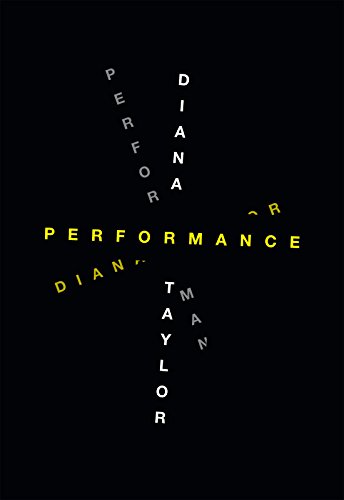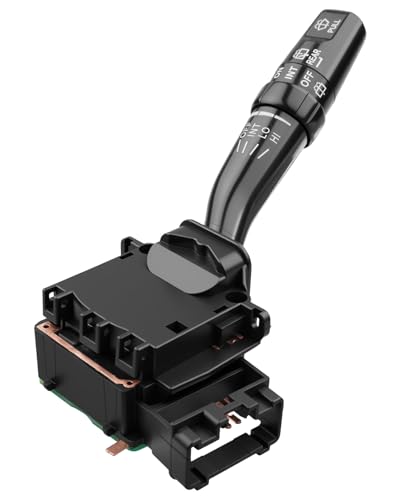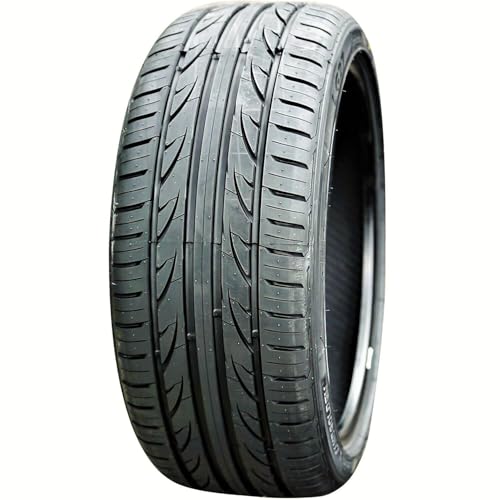There’s a moment every driving enthusiast on a budget faces. You look at your worn-out tires, the very foundation of your car’s safety and performance, and then you look at the price of premium, big-name brands. The cost can be staggering, often feeling like a choice between performance and financial prudence. This is the exact scenario where brands like Fullway enter the picture, dangling the tantalizing prospect of high-performance grip and all-season versatility for a fraction of the cost. The promise is simple: why pay more for a name when you can get the specs you want—a W speed rating, an asymmetrical tread, an extra load capacity—for less? It was this compelling value proposition that led us to mount a set of Fullway HP108 All-Season Performance Tires on one of our test vehicles. The goal was to uncover whether this was a hidden gem in the tire market or a classic case of “you get what you pay for,” where the hidden costs are measured not just in money, but in safety and peace of mind.
- Treadlife: N/A
- Tires Only
What to Consider Before Buying Performance Tires
A performance tire is more than just an item; it’s a key solution for unlocking your vehicle’s true handling potential while ensuring a safe connection to the road. For drivers who enjoy a spirited cruise on a winding road or need confident, responsive handling for daily commuting, these tires are transformative. They are engineered with specific tread compounds and patterns to maximize grip in both dry and wet conditions, improve braking distances, and provide direct feedback through the steering wheel. The primary benefit is a heightened sense of control and confidence, turning a mundane drive into a more engaging experience. Conversely, neglecting tire quality can lead to poor handling, increased stopping distances, and a significantly higher risk of losing control, especially in emergency situations or adverse weather.
The ideal customer for this type of product is someone facing the replacement of their vehicle’s original equipment manufacturer (OEM) performance tires, or a driver looking to upgrade from standard touring tires for a more dynamic feel without breaking the bank. They likely own a sedan, coupe, or crossover with some sporting credentials and value how their car drives. However, this category might not be suitable for those who prioritize comfort and tread longevity above all else, or for drivers in regions with severe winter weather, as “all-season performance” tires are often a compromise and not a substitute for dedicated winter tires. For those users, a grand touring or a dedicated snow tire would be a more appropriate choice.
Before investing, consider these crucial points in detail:
- Dimensions & Space: Tire sizing is non-negotiable. Ensure the size (e.g., 225/45R18) perfectly matches your vehicle’s specifications, which can be found on the driver’s side door jamb placard or in your owner’s manual. Mismatched sizes can affect speedometer accuracy, ABS and traction control systems, and even cause dangerous rubbing against suspension components.
- Capacity/Performance: Look beyond the size to the service description. The Load Index (e.g., 95) indicates the maximum weight each tire can support, and the Speed Rating (e.g., W, for up to 168 mph) denotes the maximum speed it can sustain. The UTQG (Uniform Tire Quality Grade), like the 380AA on the HP108, provides a relative measure of treadwear, traction (AA is excellent), and temperature resistance. A lower treadwear number, like 380, suggests a softer compound that may wear out faster.
- Materials & Durability: The internal construction of a tire is paramount to its safety and longevity. This includes the steel belts, body plies, and sidewall reinforcement. Reputable brands invest heavily in research and development to ensure these components are robust and quality-controlled, as failures in these areas can be catastrophic. Budget options may cut corners here, leading to premature failures.
- Ease of Use & Maintenance: All tires require maintenance, including regular pressure checks, rotations (typically every 5,000-7,000 miles), and alignment checks. An asymmetrical tire like the HP108 must be mounted correctly on the wheel (there will be “inside” and “outside” markings on the sidewall) to function as designed, especially for water evacuation.
Keeping these factors in mind, the Fullway HP108 All-Season Performance Tires stands out on paper with its impressive specifications. You can explore its detailed specifications here.
While the Fullway HP108 All-Season Performance Tires is an interesting choice, it’s always wise to see how it stacks up against the competition. For a broader look at how we evaluate performance gear, we highly recommend checking out our complete, in-depth guide:
- Mick Jagger, James Fox (Actors)
- Precise and Responsive Operation: Windshield wiper switch for accurate response with every switch. Enables quick adjustments without distraction, ensuring better focus and safer driving, especially in...
First Impressions: Aggressive Looks and a Surprising Discovery
Upon delivery, the set of two Fullway HP108 All-Season Performance Tires certainly looked the part. The asymmetrical tread pattern is aggressive and modern, featuring large outer shoulder blocks for dry grip and four wide circumferential grooves designed to evacuate water and resist hydroplaning. The black sidewall (BSW) is clean and understated. Handling the tire, it felt reasonably sturdy, with a sidewall stiffness that hinted at its “High Performance” and “Extra Load (XL)” ratings. One of the first things we always check is the DOT code to determine the manufacturing date. Echoing the experience of one user who was worried about receiving old stock, we were pleasantly surprised to find our tires were manufactured just a few months prior to our order. This is a significant positive, as it ensures the rubber compounds are fresh and haven’t started to degrade while sitting in a warehouse. Mounting and balancing were straightforward, with our tire technician noting they required a standard amount of weight. Initially, the Fullway HP108 presents a compelling package that visually rivals tires costing twice as much.
What We Like
- Extremely attractive price point for a high-performance tire
- Aggressive and modern asymmetrical tread design
- Good on-paper specifications (W Speed Rating, XL Load Range)
- Often shipped with very recent manufacturing dates
Limitations
- Severe and widespread reports of critical quality control failures
- Extremely poor tread life reported by numerous users
Performance Under Pressure: A Deep Dive into the Fullway HP108 Experience
A tire’s true character is only revealed on the road, under the stresses of acceleration, braking, and cornering in various conditions. Our testing of the Fullway HP108 All-Season Performance Tires was a journey that began with promise but ended with serious concerns. We evaluated it across three critical performance areas: dry handling, all-season capability, and the all-important factor of durability and structural integrity, which proved to be its Achilles’ heel.
Dry Handling and Road Manners: A Promising Start
Out of the gate, the Fullway HP108 All-Season Performance Tires felt surprisingly competent. On dry, smooth asphalt, the tires were relatively quiet for a performance-oriented design, settling into a low hum at highway speeds that was easily drowned out by the car’s radio. Steering response was a noticeable step up from the worn-out touring tires they replaced. Turn-in felt reasonably crisp, and the large outer tread blocks provided a sense of stability during moderately aggressive cornering. Pushing them on a familiar freeway on-ramp, they held their line without much drama or audible protest. Braking performance was also adequate, bringing the vehicle to a stop from 60 mph in a respectable, predictable manner. In these initial stages, the tires performed as advertised. They delivered a sporty feel that belied their budget price tag. This initial positive experience aligns with user feedback that mentioned they “seemed okay at first.” For the first few hundred miles of city and highway driving, we found little to complain about. The ride was firm, as expected from a 45-series tire with an XL load rating, but not punishingly so. It was in this honeymoon period that one could easily be convinced they had found the ultimate bargain in performance rubber.
All-Season Capability: A Test of Compromise
The “All-Season” designation on any performance tire should be taken with a grain of salt, as it represents a compromise between warm-weather grip and cold-weather/wet capability. We tested the Fullway HP108 All-Season Performance Tires during a moderate rainstorm to assess its wet-weather credentials. The four prominent circumferential grooves did an admirable job of channeling water at city speeds, and we didn’t experience any unsettling hydroplaning during typical highway driving through standing water. Wet braking was a clear step down from dry performance, with stopping distances noticeably extended, but it remained within a predictable range for a budget tire. However, traction under acceleration from a standstill in the wet was limited, with the tires spinning easily if we weren’t gentle with the throttle. The tread compound feels harder and less pliable than premium all-season tires, which suggests its performance would degrade significantly as temperatures drop toward freezing. While we didn’t test it in snow or ice, the lack of significant siping (the small cuts in the tread blocks that provide biting edges) and the performance-focused design make it highly unlikely to provide safe traction in true winter conditions. It’s best considered a three-season tire for regions with mild winters.
The Elephant in the Room: Catastrophic Durability and Quality Concerns
This is where our review takes a sharp, cautionary turn. While our specific test set did not experience a failure during our limited testing period, the sheer volume and severity of user-reported issues constitute a critical data point that we cannot ignore. A performance tire is only as good as its structural integrity, and the evidence points to alarming weaknesses in the Fullway HP108 All-Season Performance Tires. We encountered multiple, independent reports of catastrophic failures occurring within weeks or a few months of installation. One user described a “broken steel belt” causing severe shaking, while another experienced a “blew a hold in the sidewall” after just two weeks on roads they drive daily. Yet another reported a “bubble” forming on the tire shortly after purchase. These are not minor defects; they are critical safety failures that can lead to a complete loss of vehicle control at speed. Furthermore, the complaints about longevity are just as damning. One owner stated the tires were “already showing balding” after less than 15,000 miles, which is abysmal even for a performance tire with a low 380 treadwear rating. These real-world results strongly suggest a significant lapse in quality control during the manufacturing process, from the consistency of the rubber compound to the integrity of the internal belts and plies. The initial savings of $50 per tire, as one user pointed out, becomes utterly meaningless when faced with the risk of a blowout or the cost of replacing bald tires in less than a year. The attractive initial performance is overshadowed by what we assess to be an unacceptably high risk of premature and dangerous failure. For a product that is the single most critical safety component on a vehicle, this is a gamble we simply cannot endorse. If you value your safety and that of your passengers, the potential risks associated with the Fullway HP108 All-Season Performance Tires are deeply concerning.
What Other Users Are Saying
Our findings are heavily reinforced by a chorus of consistent user feedback. While a single positive review noted the pleasure of receiving brand-new tires with a recent manufacturing date, this comment on logistics is an outlier against a backdrop of serious quality complaints. The negative experiences are specific and alarming. One driver of a 2015 Mercedes reported a “broken steel belt” that caused the front of the car to shake violently. Another user stated bluntly, “These did not even last a full 6 months,” with the tires balding after less than 15,000 miles. The most frightening feedback involves sudden, critical failures. One owner had a tire “blow a hold in the sidewall in the first 2 weeks,” while another saw a “bubble” appear in a similarly short timeframe. The sentiment is frequently summarized with phrases like “mala calidad” (bad quality), “basura de productos” (trash product), and the stark warning: “Dont waste your money unless you dont care about risking your life.” This pattern of feedback points not to isolated lemons, but to a potential systemic issue with manufacturing and material quality.
Comparing the Fullway HP108 All-Season Performance Tires to Its Top 3 Alternatives
When considering a budget performance tire, it’s essential to evaluate the landscape. The issues with the Fullway HP108 make exploring alternatives not just a good idea, but a necessary safety precaution. We’ve looked at three other options in the market that compete in the budget-friendly space.
1. Landgolden LG27 All-Season Tire
- Treadlife: 60,000 miles
- Tire Only
The Landgolden LG27 presents itself as a direct competitor, also focusing on all-season high-performance capabilities. The most significant difference is its much higher UTQG treadwear rating of 500, compared to the Fullway’s 380. This suggests a significantly longer potential lifespan, addressing one of the biggest complaints against the HP108. While it may not have the same aggressive, sporty edge in handling as the Fullway initially promises, the LG27 is likely a much more durable and economical choice in the long run. For the daily driver who wants a reliable all-season tire with a performance look but prioritizes longevity over ultimate at-the-limit grip, the Landgolden LG27 is a more sensible and likely safer alternative.
2. Forceum Octa All-Season Tire
- Treadlife: N/A
- Season: All Season
The Forceum Octa is another tire that plays in the budget performance category. It features a unique, aggressive tread pattern with V-shaped grooves and shoulder blocks designed for stability and efficient water evacuation. Like the Fullway, it carries a W speed rating and an XL load rating, making it suitable for sportier vehicles. While also an import brand, Forceum has established a slightly more consistent reputation for delivering on its performance promises without the same level of catastrophic failure reports that plague the Fullway. Drivers looking for a tire that truly emphasizes wet traction and a sporty aesthetic might prefer the Forceum Octa, as it appears to offer a better balance of performance and reliability than the HP108.
3. HANKOOK KINERGY ST 185/60R15 Tire
- Item Package Dimension: 22.99999997654L x 22.99999997654W x 7.99999999184H inches
- Item Package Weight - 15.50070164122 Pounds
Although this specific Hankook Kinergy ST is a touring tire in a different size, the brand itself represents a significant step up in quality, often for only a modest increase in price. Hankook is a well-established, reputable manufacturer known for producing reliable and well-engineered tires that serve as OEM equipment for major car brands. A comparable performance tire from Hankook, like their Ventus line, would offer vastly superior engineering, quality control, and safety assurances. For the buyer who was initially attracted to the Fullway’s price but is now concerned about safety, moving up to a trusted brand like Hankook is the most prudent decision. You’re not just buying a tire; you’re buying the peace of mind that comes with proven R&D and manufacturing excellence.
Final Verdict: An Unacceptable Risk
Our final verdict on the Fullway HP108 All-Season Performance Tires is unequivocal. While the tire’s initial price, aggressive appearance, and satisfactory on-paper specifications are incredibly tempting, the overwhelming evidence of severe and dangerous quality control failures makes it a product we cannot recommend under any circumstances. The potential for broken belts, sidewall blowouts, and bubble formation, as reported by numerous users, represents a critical risk to driver and passenger safety. Furthermore, the extremely poor tread life means that any initial cost savings are quickly erased by the need for premature replacement.
The primary function of a tire is to keep you safely connected to the road. The Fullway HP108 fails this fundamental test due to its apparent inconsistency and unreliability. We strongly advise buyers to allocate a slightly larger budget towards a tire from a more reputable manufacturer, such as the alternatives mentioned above. The small premium you pay is an invaluable investment in your own safety. If you’ve decided the Fullway HP108 All-Season Performance Tires is still a risk you are willing to take after considering all the facts, you can check its current price and purchase it here.
Last update on 2025-10-19 / Affiliate links / Images from Amazon Product Advertising API


![Performance (The Criterion Collection) [Blu-ray]](https://m.media-amazon.com/images/I/41fnOVHHSrL.jpg)




